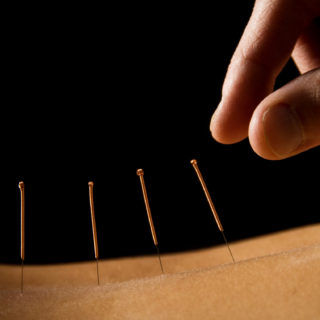What Is A Frozen shoulder?
By Mihael Mamychshvili,RST Angel Hands Integrative
As far as joints are concerned, the shoulder is truly remarkable. It moves in absolutely every direction. The only other joint that is even somewhat close in terms of the different types of movement is the hip. But even there, the mobility is much more limited.

You need a lot of movement in the shoulder to perform everyday activities. The ligaments that hold the upper arm bone, the humerus , in the socket are quite loose to allow for this wide range of motion. Because they are lax, they don’t do much to hold the shoulder together.
What really holds the shoulder together and stabilizes the joint are muscles that are referred to as the rotator cuff . There are four small muscles that run from the shoulder blade to the humerus. These muscles completely surround the humerus like a sleeve or cuff. They are very dynamic, contracting to stabilize the shoulder when needed or relaxing to allow you to move the arm freely. The movement of our shoulder is so free and easy that we often take it for granted.
How does a shoulder “Freeze“?
Frozen shoulder, also called adhesive capsulitis , usually starts with a minor injury. For example, you may jar your shoulder by tripping and breaking your fall with an outstretched arm. It may also start after an inflammatory problem, like a little tendinitis or bursitis of the shoulder.
Because the shoulder is painful, you’ll often limit your movement or stop using your shoulder to avoid any discomfort. Although it’s important to rest your body if it’s injured, the rest period should be limited to just the first 24 to 48 hours following an injury. If you restrict your movement for any longer than that, adhesions , constricting bands of fibrous tissue, start to form within the shoulder joint.
You are always moving your shoulders, even if it’s brushing your hair or reaching behind you to close the car door. Because of this ongoing movement, adhesions don’t normally have an opportunity to develop. Limit your movement for several days, however, and this fibrous tissue starts to stick to the ligaments in your shoulder, especially in the lower part of the joint where the ligaments are most lax.
Once these adhesions begin to form, the shoulder starts to feel stiff and uncomfortable. You’ll limit your movement in response to the pain and the reduced movement causes more stiffness. Before you know it, you’re trapped in what seems to be a vicious cycle.
If you don’t take care of the problem immediately, it will progress from a little discomfort to severe pain that interferes with your daily activities and your sleep. It can become difficult or impossible to do simple things like brushing your hair, doing up your bra behind your back or even reaching your arm back to put it into the sleeve of your coat.
Over time, you will be unable to lift your arm. Your shoulder, in a sense, becomes frozen, hence the name. The pain in the shoulder can be intolerable and will likely spread into your neck and arm as your body tries to compensate for the lost movement.
If you catch the problem early, you can recover relatively quickly with some regular massage and some self-care exercises that you can do at home. Otherwise expect a lengthy and somewhat uncomfortable course of treatment to regain your normal pain-free movement.
The conventional treatment for a severe case is manipulation under anesthetic. A surgeon will put you under and while you are asleep will force your shoulder through a full range of motion to pull apart the adhesions. Sometimes surgery is used. In either case, don’t expect a quick fix. This kind of treatment is usually followed by several months of physical therapy or massage therapy.
For moderate cases, doctors may use oral anti-inflammatory drugs, or they may inject cortisone or anesthetic medications into your shoulder to reduce the pain and inflammation.
Your Shiatsu therapist will typically treat frozen shoulder through a combination of massage techniques, stretching and possibly joint mobilization procedures. This will be combined with exercises that you must do between treatments. Your therapist will suggest a treatment schedule that is best for you. You’ll likely need frequent short treatment at first and then stretch it them out as condition improves.
An ounce of prevention …
Have your ever hear the saying, “An ounce of prevention is worth a pound of cure.” This cliché couldn’t be any more true when it comes to frozen shoulder. To avoid the pain, disability and cost associated with treating frozen shoulder, be proactive.
If you injure your shoulder, see your Shiatsu therapist immediately. They can help you with the problem and give you exercises to prevent frozen shoulder from developing. It’s usually minor shoulder injuries that lead to frozen shoulder, so don’t think that because it’s a small injury that it will be fine if left alone.
If you have any shoulder pain, even minor pain that lasts for more than two days, pick up the phone and call your Shiatsu therapist. Unless you’ve seen someone with frozen shoulder, it’s hard to understand the pain and suffering you’ll save yourself.
The frozen shoulder mimic
Here’s something that most health professionals, including your doctor, don’t likely know: Trigger points in one of the rotator cuff muscles can mimic the exact same symptoms as frozen shoulder.

There’s a rotator cuff muscle underneath the shoulder blade (scapula) that is called subscapularis. It can develop knots or trigger points that cause symptoms that are almost exactly like symptoms of frozen shoulder. These knots refer pain into the shoulder in the same way and cause your movement to be limited in a similar pattern.
Unlike frozen shoulder, however, these trigger points can be deactivated, sometimes very quickly. Relief can be had after only a few sessions.
Most massage therapists are able to assess for these trigger points and help eliminate them from your muscles. So if you suspect that you are developing frozen shoulder, book an appointment with your massage therapist so they can check for this frozen shoulder copycat.
Your therapist may do hands on work to the muscle to get rid of the knot or they may use a gentle stretch technique where they will have you first contract and then relax the muscle as they pull it into a stretched position. There are a variety of approaches that can be taken and your Shiatsu therapist will choose the most appropriate techniques for your needs.
The Emotional Component
With chronic pain there is always and psycho-emotional component from my experience. In my clinical experience a Frozen Shoulder can start from a coping mechanism that was subconciously created by the body to cope with a stressful period, a traumatic event, or even being in an”Hostile enviorment” at work, or at home where the person felt “Unsafe”. Body reacts to the mind, the emotions and the events that the person goes through in life. This protection when carried over a long period of time creates chronic tension and pain.
To treat successfuly a frozen shoulder in my experience everything about the person must be taken into account you can not seperate the body from the mind, the person in the present and what they experienced in the past.
To book your assessment and treatment go to our online schedule at http://www.angelhands.ca/book-now


















No Comments
Be the first to start a conversation